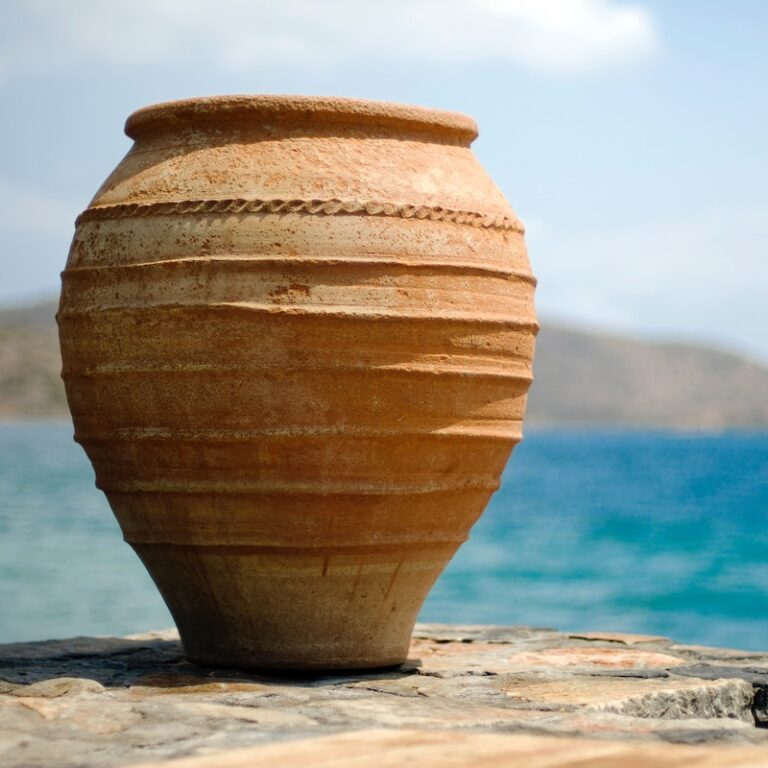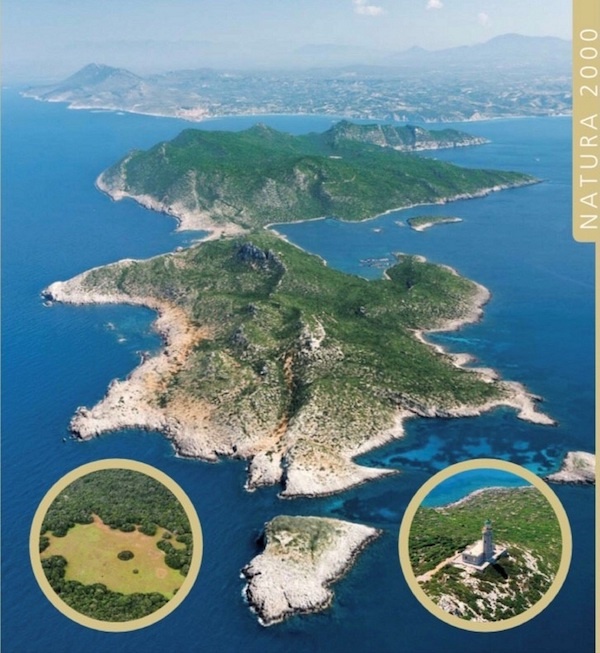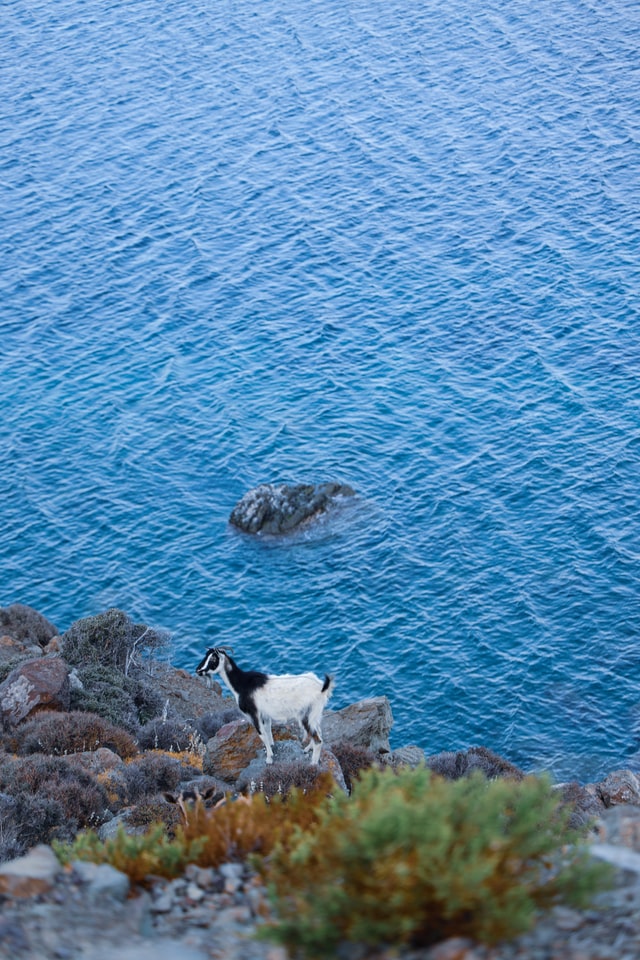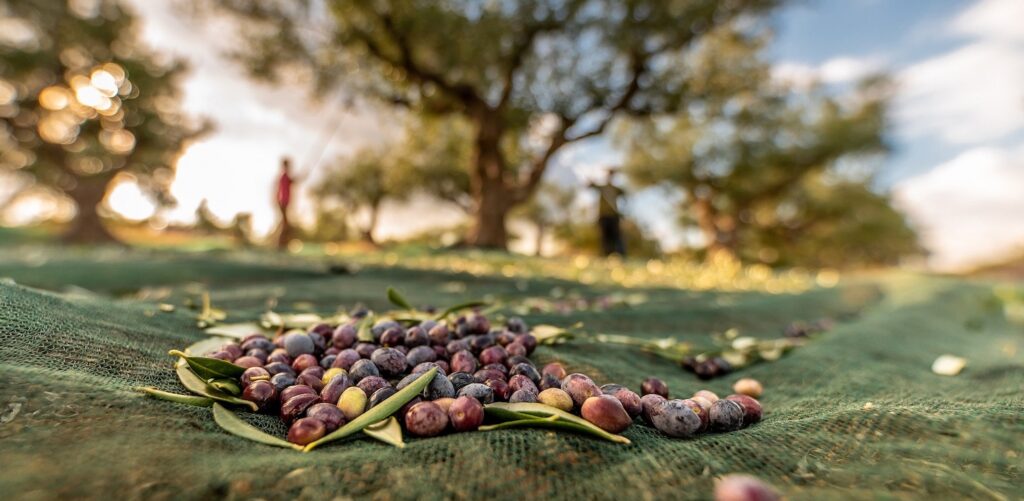
Koroneiki Tzara (large clay jar from Koroni)
Tzara, a word which connects throughout the ages of different cultures around the Mediterranean Sea, their gastronomy and trade. Originally it was the Arabic word dgiarrah, the pot, which became jarra in Spanish, giara in Italian, jarred in French word and jar in English. The tzara is a large clay jar, that is a round or oval glazed storage vessel. It is used to store and keep olive oil, water and wine.
Tzares, the notorious pots from Koroni, were crafted until 1960, using hands like ancient times, without the pottery wheel. The ancient local technique survived since King Nestor (Bronze Age Mycenean Greece). Among the archeological findings in the Palace of Nestor is one of the oldest storage jars.
Being popular in Greece and generally in the Mediterranean basin, tzara was a basic component of the Mediterranean Diet. Inside it the secrets of the Mediterranean food culture are safeguarded from antiquity till modern times.
Natura 2000 Network Areas
The Municipality of Pylos-Nestor, located at the southwestern edge of the Peloponnese, is an area of rich natural beauty and interesting flora and fauna, which has been included in the Natura 2000 network.
The areas of the Municipality included in the Natura 2000 network are the following:
- Site of Community Importance (SCI) (according to the Habitats Directive), with the name “Islands of Sapienza and Schiza, Cape Akritas,” an expanse of 27,806 acres. The area includes cape Akritas and the nearby islands Schiza and Sapienza, as well as the islands Venetiko, Aghia Mariani, Avgo, etc., belonging to the Oenousses complex.
- Site of Community Importance (SCI) (according to the Habitats Directive), with the name “Strait of Methoni and the Surrounding Area,” a total expanse of 2.404,33 acres.
- Site of Community Importance (SCI) (according to the Habitats Directive), with the name “Pylos Lagoon (Divari) and Sfacteria Island (Aghios Dimitrios),” a total expanse of 8.767,30 acres.
- Special Protection Area (SPA) for birds (Birds Directive), with the name “Gialova Lagoon and Sfacteria Island,” a total expanse of 2.466,11 acres.


Sapientza (Sapienza)
Sapientza or Sapienza is a Greek island off the southern coast of the Peloponnese, near the city of Methoni. It is the second-largest island of the Messenian Oinousses, a group of islands, which consists of three small islands (Schiza, Sapientza, and Agia Marina. Its name is of Italian origin and means “wisdom.”
All three islands are incorporated in the Natura 2000 Network since the deepest point of the Mediterranean Sea is located south-west of Sapientza, known as “Calypso Deep” with a depth of 5,121 m.
The island has a size of 9 square kilometers and the coastline is particularly steep and rocky. The only beach on the island is “Ammos,” located in its northern part, opposite Methoni. At the center of the northern part of Sapientza in the created valley between the small mountains, there is the only arbutus forest in the Mediterranean Sea. The remarkable thing is that arbutus are trees, with a height of approximately 10 m. and the area has been designated as a “monument of nature” since 1986.
In the center of the island, there Spartolakka, an area where the vegetation is replaced by a plateau, with a peculiar yellow-orange rock and was formed by the accumulation of huge quantities of pollen. The site is a source of information for scientists about the age of the forest and the region. On the island the visitor can also see Cretan wild goats (known as Kri Kri), wild sheep (mouflon), and several species of birds (pheasants, grouses, woodcocks, thrushes, etc.).
Near the natural harbor of Porto Longo at the southeast side of the island, there is a lighthouse, built in 1885 by Englishmen. The height of the stone tower is 8 meters and its focal plane is 110 meters.
Sapientza was among the most significant trade and marine centers since the ancient times, so it has been the witness of many shipwrecks. Two of them, the ancient shipwreck of the Granite Columns and the Roman Sarcophagi, are of great importance to archaeologists. Around 1920, local fishermen discovered archaeological findings at the seabed near the north cape of Sapienza, at a depth of 10 meters. Five years later, history researcher Dionysios Polaris, traced the marbles that were lying at a small distance from the north coast and expressed the opinion that this was the wreckage of a vessel transporting antiquities. The Greek Ephorate of Underwater Antiquities proceeded with systematic research in the late 1970s. According to archaeologists, this vessel probably dates at the Roman period, since a Roman amphora was discovered very close to the columns. Studies of the column fragments showed that the columns were part of a building containing 16 columns from the grand Colonnaded Courtyard, built by King Herod in Caesarea, Palestine in the first century AD.
According to the Greek Ministry of Culture, a very important shipwreck has been located north of the island Sapienza relatively close to the shipwreck of Columns. The shipwreck is lying at a depth of 15 meters. Its cargo contains a number of stone sarcophagi including their covers. The sarcophagi are intact except for one, which probably ruined when the ship sunk. The sarcophagi measure 2.20 x 0.80 m. The sarcophagi bear reliefs; their decoration is simple containing floral motifs, boukranion, etc. The covers are curved with simple, shaped decoration at the edges. The shipwreck is dated to the 3rd century AD. Systematic archaeological research was conducted by the Greek Ephorate of Underwater Antiquities at the end of 1970 in cooperation with the University of Bologna. Similar shipwrecks of sarcophagi have been located close to island Syros and in the marine area between island Andros and island Tinos.
The Priceless Value of the Messinian Live Olive Grove

Table olives and olive oil have always been the principal products of the Messinian land. The cultivation of olive tree, the sacred tree of Greek antiquity, began in the 3rd millennium BC, during the Early Bronze Age, while intensive and systematic cultivation of the olive tree occurred during the Mycenaean era (1680 – 1200 BC). Τhe archeological findings in the Palace of Nestor, such as the tablets of Linear Script B, give us important information about olive tree cultivation in Messenia.
The long-standing presence of the olive tree has marked the landscape along with the daily, spiritual and social life of people, creating a special cultural heritage, tangible (for example tools, techniques, products, etc.) and intangible (know-how, oral traditions, food habits, etc.). Moreover, the social importance of olive tree cultivation is vital, as a network of social, economic and cultural activities is built around it, defining interpersonal relationships, strengthening social ties and forming special cultural identities. The eminent carriers of the olive tree and olive oil cultural heritage are both producers and consumers in rural and urban areas, who preserve and transmit from generation to generation both practices and knowledge related to olive tree cultivation and harvesting as well as eating habits.
Nowadays, olive cultivation in Messinia is almost monoculture with 14 million of olive trees and an olive oil production reaching the amount of 55.000 tons. The olive tree farms are relatively small; varying from 2 to 4 hectares.
Cultivation is carried out in traditional procedure, which explains the rather high cost of harvest (approximately 1.8-2.1 euros per kilo of olive oil). A basic characteristic of the area is the relatively abrupt and sloppy complex landscape of compound succession of Mediterranean forest areas and olive tree groves. This feature, together with the use of innovative tools, is a comparative advantage for the sustainability of the ecosystem.
Agricultural production is based on traditional methods, in order to preserve and pass down important elements of local identity to the younger generations. Since the environmental interest is growing quickly worldwide, the Messinian olive grove acquires a priceless value as it is environmentally friendly. It emerged almost gently without violent interventions in the ambience (clearings, leveling, etc.) A large number of centuries old olive trees is a witness of modern Greek history.
The most powerful advantage of the olive grove in the area is its environmental dimension. Olive groves start from the mountains, reaching the sea and along the way they alternate with forest areas in an intense landscape with streams that flow towards the shores, composing the agro-environment; the so called “olive-forest” is considered an integral part of the region. Forest areas inserted in the olive groves, or vice versa, provide shelter for many wild animals, birds and plants, contributing to the conservation of biodiversity, which is also a sign of a healthy ecosystem.
Last but not least, another environmental dimension that came to light recently, is the contribution of the olive grove to the reduction of the greenhouse effect since the carbon footprint of the olive grove is negative. That is to say, carbon dioxide is stored and not released into the atmosphere.
Long before the concept of “ecology” became widely known, the philosopher Rudolf Steiner came up with the idea of considering the farm as a living organism adapted to local conditions. Implementing environmentally friendly managements is not just a way of producing food but a philosophy aimed at sanitizing the soil, the earth and man.
